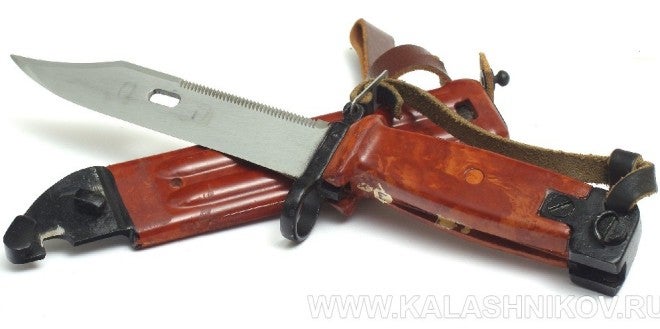Kalashnikov Gun Magazine has published an interesting article telling the story of the development and evolution of Soviet/Russian AK bayonets. The author of KGM article is Konstantin Podgornov. He basically published one of the chapters of his upcoming book dedicated to the development of the AK-47 in the Soviet Union and Russia. Mikhail Degtyaryov, KGM‘s chief editor, kindly provided us the rights to use their content and I am happy to have the opportunity to translate their article and present it to our readers.
When reading this article, you’ll see that Soviet/Russian AK bayonets have model designations of 6X# with the number after X being the generation of the bayonet. These are the GAU indexes which were/are given to each and every equipment piece adopted by the Soviet Union and the Russian Federation. To be precise, the Cyrillic letter X should be translated as “Kh”, however, I decided to write the designations with X because most of the other sources do it like that and I don’t want to cause confusion and complicate it for our readers. The production years of any particular model are written in brackets next to the model name. OK, without further ado, let’s take a look at the chronological list of different Soviet and Russian AK bayonets.
6X2 (1955-1960)

The 6X2 is the first AK bayonet adopted by the Soviet Union in 1955 (with the Type 3 rifles). Prior to 1955, AKs didn’t even have a provision for a bayonet. After the adoption of the 6X2 bayonet, many of pre-55 AKs (Type 1 and Type 2) were retrofitted to take a bayonet. However, as Podgornov notes, not all pre-55 AKs passed this modification and there are even some post-55 AKs that don’t have a bayonet lug. The reason is probably the delays of introducing the bayonet lug into the mass production. According to the user manual, these bayonets were issued with fixed stock rifles only.
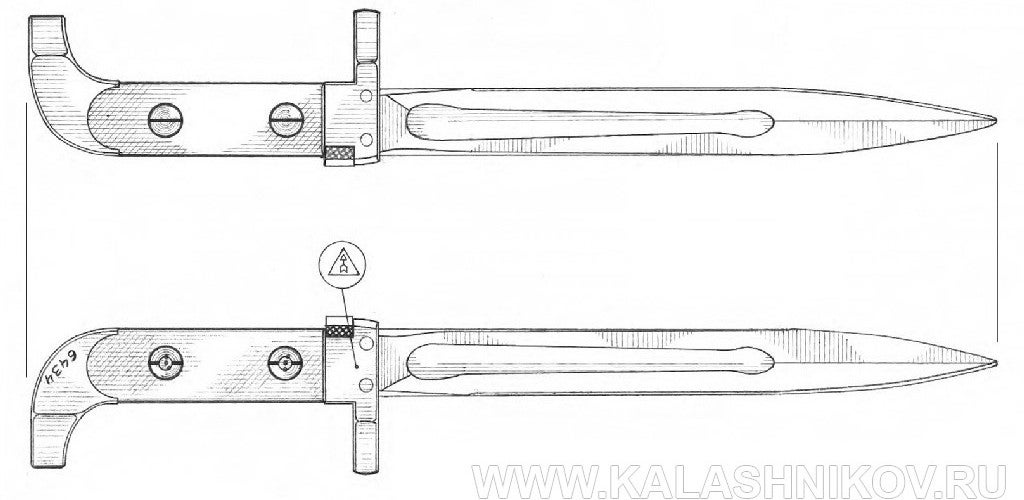
6X2
The shape of the 6X2 bayonet is similar to SKS bayonet, however, the 6X2 blade is shorter. This bayonet has a two-piece handle. The scales are attached to the tang via bolts and nuts which are staked to prevent them from coming loose. This bayonet was made in large quantities in IzhMash. 6X2 AK bayonets were marked with the serial number of the rifle they were issued to. There are some 6X2 bayonets with no markings which were issued to the retrofitted rifles or were spare bayonets. The 6X2 bayonet is not compatible with later versions of AK rifles.
6X3 (1960-1964)
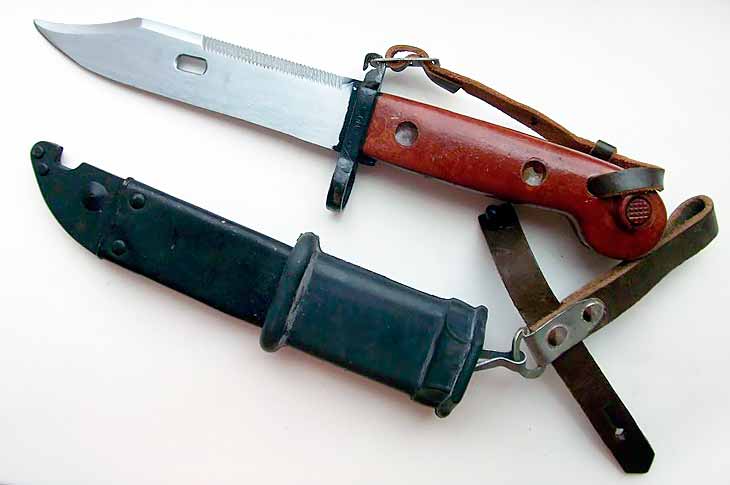
The next generation of AK bayonets has a model designation of 6X3. These bayonets were manufactured by IzhMash and TOZ (Tula Arms Plant). 6X3 was adopted along with the AKM rifle. Later it was also used with the AKMS and SVD rifles. This bayonet has two versions which apparently have minor differences such as the material and color of the handle.
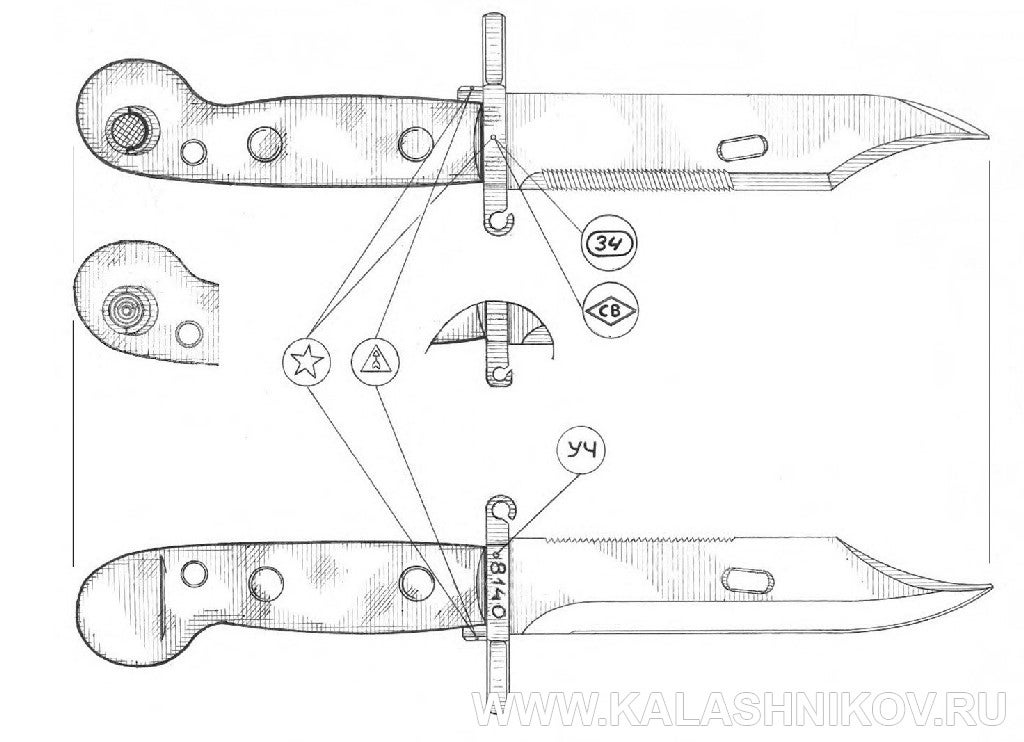
6X3 Type 1
The 6X3 has quite an improved design compared to its predecessor. Particularly, it has a different blade style, saw teeth were added to the spine and the wire cutter feature was first incorporated into the design of AK bayonets. The hole on the blade allows to attach the bayonet to the scabbard and form a wirecutter. By the way, due to the non-conductive material of the bayonet handle and scabbard cover, the soldiers could also cut the electric fence wires.
This bayonet was also the first one to have a leather strap attached to the loophole on the handle and to the hook on the finger guard thus forming sort of a knuckle guard that was supposed to prevent the knife from being knocked out in hand to hand combat.
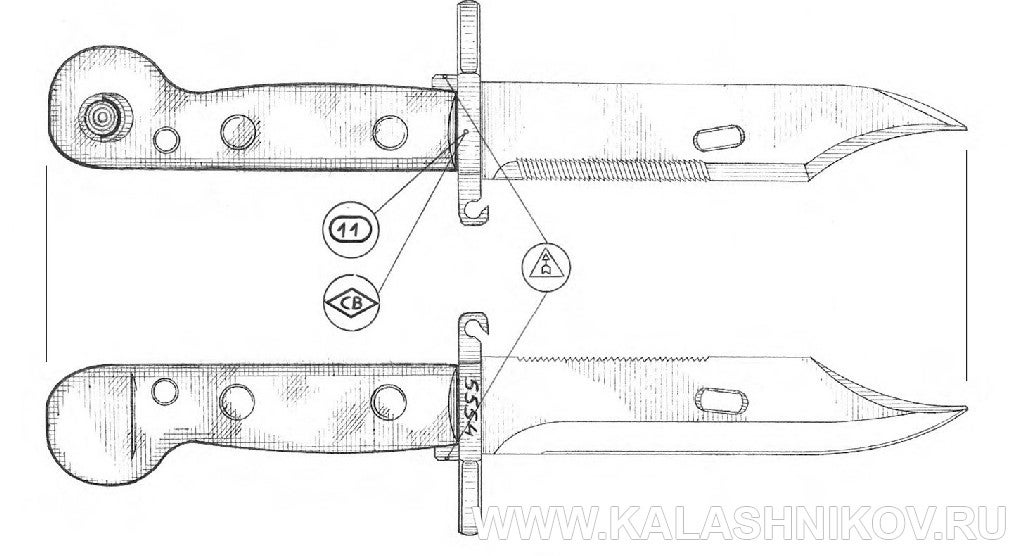
6X3 Type 2
The grip scales of 6X3 bayonet are attached to the tang via bolts and nuts. The bolt holes are covered with a glued plug. The 6X3 bayonet is an AKM specific one. It can’t be used with the older versions of AK-47 rifles or with the AK-74.
6X4 (1965-1985)

The successor of the 6X3 bayonet was the much more improved 6X4. This design was very successful and was the most produced one. The AK-74 rifle was also designed to be compatible with this bayonet. The 6X4 was made both by IzhMash and TOZ.
The blade shape of all versions of 6X4 AK bayonets is almost identical to that of their predecessor – 6X3, however, the handle on the 6X4 represents a single piece part (made of a material called AG-4V (АГ-4В)) which is glued to the tang and fixed in place via a cross pin. The pommel of the handle is a rather large metal part with the attachment mechanism of the bayonet built into it. During its production years (1965-1985), this bayonet has been changed several times resulting in the existence of four different versions.
6X4 Type 1 (1965-1971)
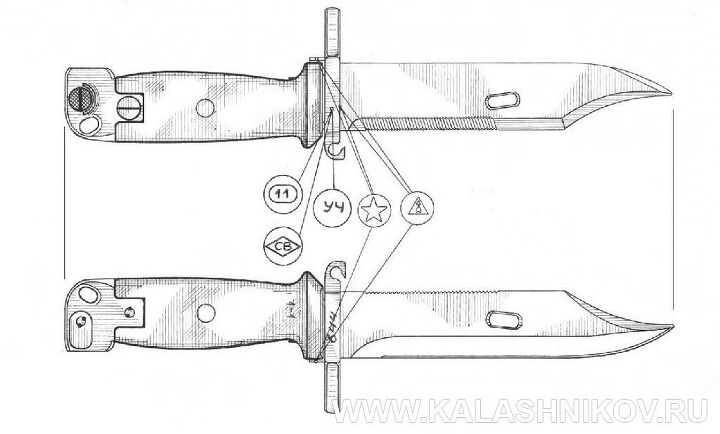
6X4 Type 1
This very first version of the 6X4 bayonet was equipped with the scabbard borrowed from the previous model (6X3). It turns out that the distinctive red scabbard of this bayonet entered the service much later than the bayonet itself.
6×4 Type 2 (1972-1982)
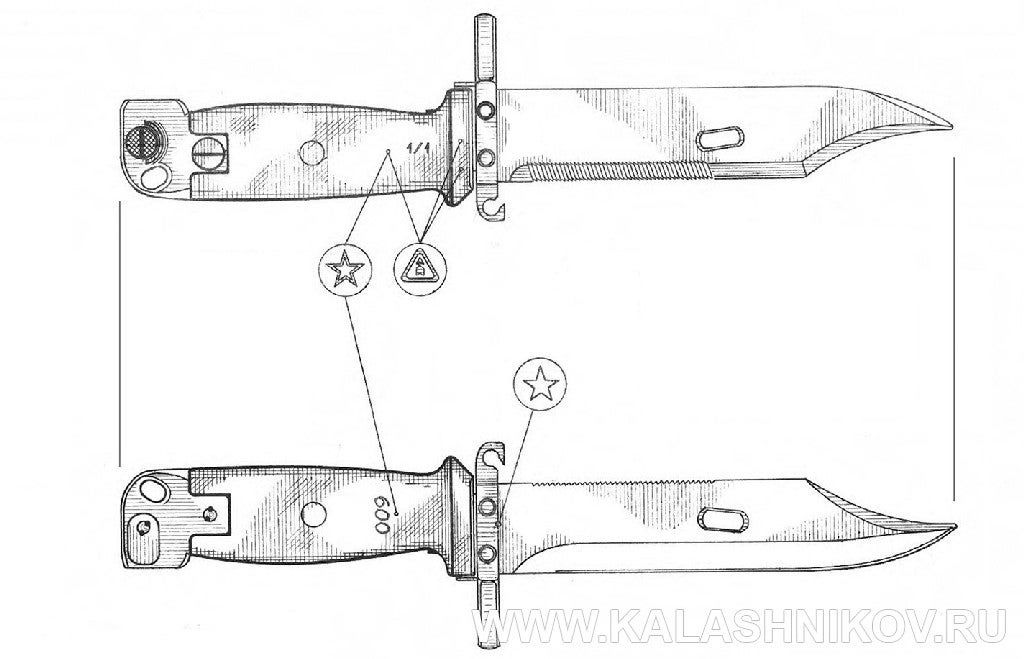
6X4 Type 2
The second version of the 6×4 bayonet had the metal butt and the finger guard made of a cast metal as opposed to the machined parts of the 6X4 Type 1. Other than this difference, the Type 1 and Type 2 are pretty much identical. The only visual difference are the two visible rivets on the 6X4 Type 2 finger guard. On Type 1 these rivets also exist but they are ground flush with the finger guard.
The type two bayonet is also the last version of 6×4 AK bayonets made by TOZ. The reason is that in 1981, Tula plant ceased the production of AK-74 rifles to start making AKS-74Us (Krinkovs) which were not supposed to have bayonets. Later versions of the 6×4 bayonet were made by IzhMash only.
6X4 Type 3 (1983-1986)
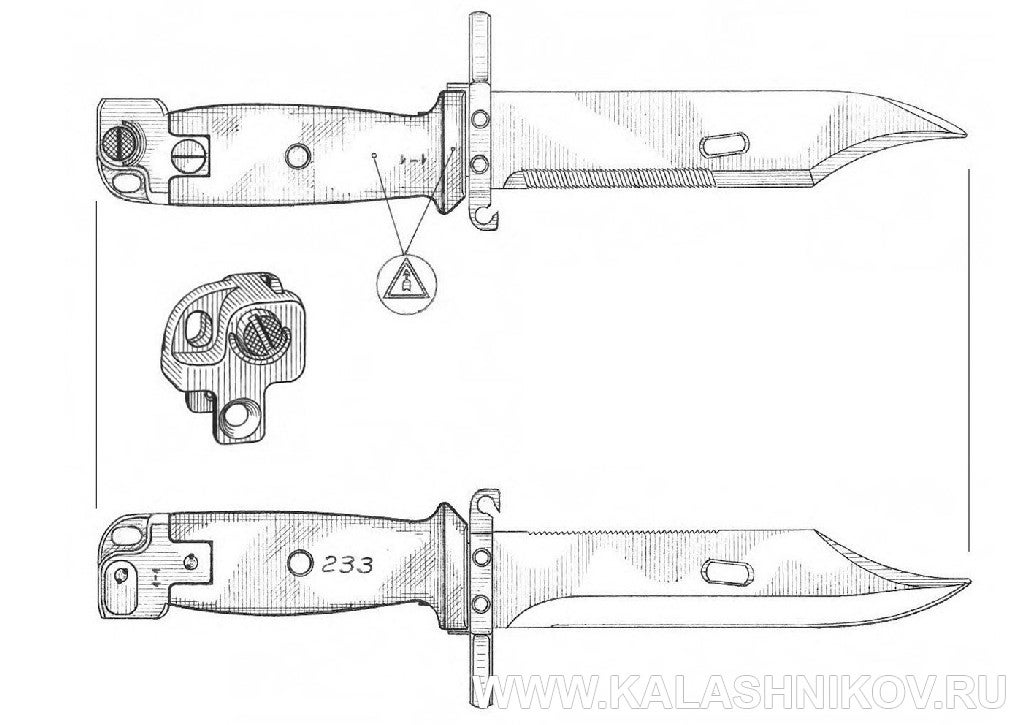
6X4 Type 3
The only difference of the 6X4 Type 3 bayonet from the Type 2 is the different shape of the bayonet catch mechanism housing. The lanyard hole portion was scalloped probably to decrease the overall weight.
6X4 Type 4 (1981 and 1986)
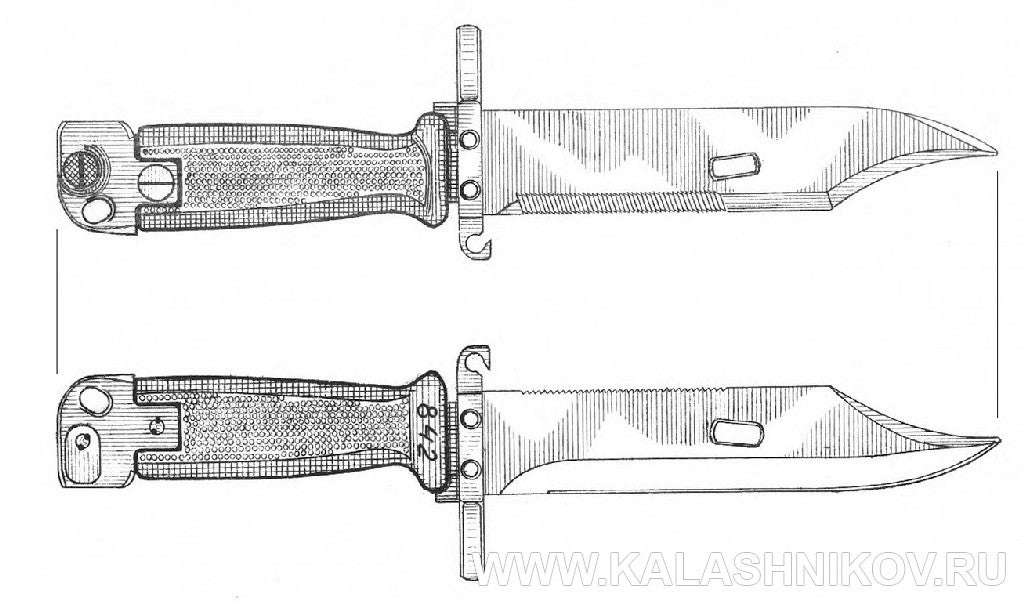
6X4 Type 4
The fourth version of the 6×4 series of AK bayonets is the rarest one. This bayonet was made by another Soviet arms designing plant – TsNII TochMash. Possibly, this was an experimental bayonet although it was issued in small quantities. It was largely identical to the 6X4 Type 2 with the exception of the handle attachment method. The handle of 6X4 Type 4 bayonet was over-molded on the tang thus eliminating the need of a cross pin seen on conventional 6X4 AK bayonets. The handle material was also different (PA-6 polyamide instead of the AG-4V polymer material) and had a dark brown color. The handle of 6X4 Type 4 bayonet features stippling style pattern. There is also a small gap between the handle and the finger guard. The Type 4 scabbard was 10mm longer than other 6X4 scabbards. These longer scabbards later became the base for development of the next generation 6X5 bayonets, however, the 6X5 bayonets are not compatible (won’t go in all the way) with 6X4 Type 4 scabbards.
The production of 6X4 Type 4 bayonets lasted only one year (1981), however, in 1986 a small batch was made for the commemorative green furniture AKs which were awarded to best soldiers of the Soviet border guard. These bayonets and their scabbards had a green color matching the furniture color of the mentioned rifles.
6X5 (1986 to present day)

This bayonet was developed thanks to the introduction of the PA-6 Polyamide which I guess is the same as Nylon 6. They decided to make an improved and simplified bayonet that would be made with the new handle material. There are three versions of 6X5 AK bayonets.
6X5 Type 1 (1986)
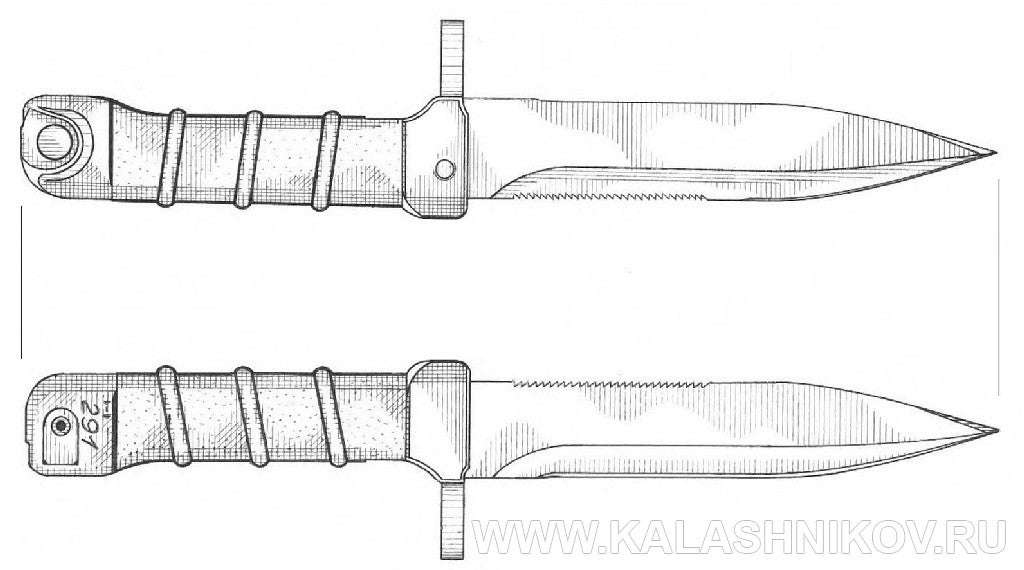
6X5 Type 1
The blade of this bayonet had a completely different shape and was 10mm longer than that of the 6X4. The saw teeth were also simplified. The handle of a new shape was overmolded onto the tang. The metal pommel was deleted and the attachment mechanism was built into the polymer handle. They also got rid of the leather hand strap.

Left – 6X5 Type 1. Right – 6X5 Type 2 and Type 3
Another design change was the elimination of the hole on the blade. The wirecutter feature was different too. As shown on the left of the above-embedded image, in order to cut the wires, the user had to pass the tip of the blade through the slot at the tip of the scabbard. This way of wire cutting was tested during the Soviet-Afghan war and it proved to be not the best solution.
6X5 Type 2 (1987)
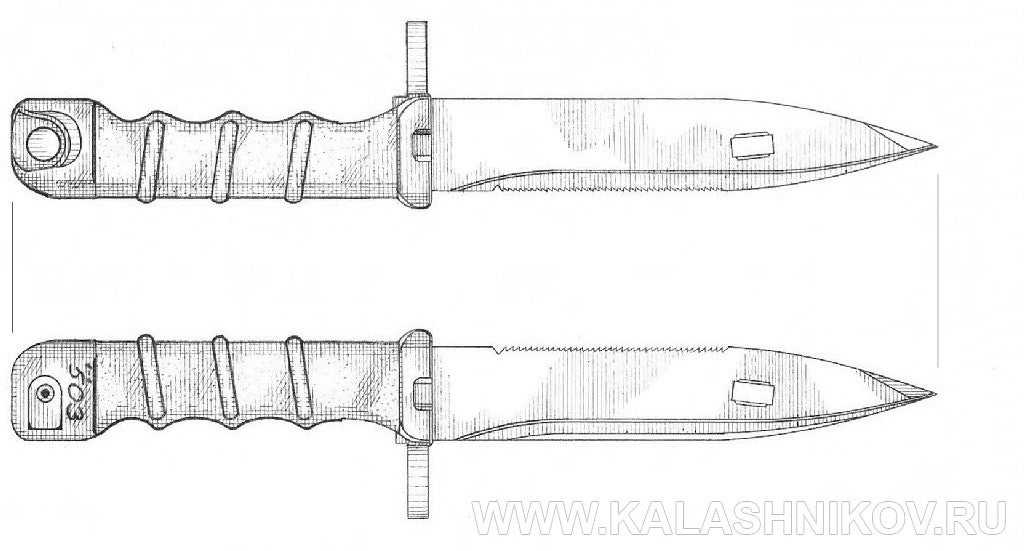
6X5 Type 2
As you have guessed from the drawing, they reintroduced the hole on the blade in the second iteration of this bayonet. The 6X5 Type 2 bayonet also had a longer saw portion and a more ergonomic handle with finger grooves. Small cuts on both sides of the handle (next to the finger guard) were made to make a room for the scabbard carabiner to prevent it from damaging the handle. The shape of the attachment mechanism button shield was also slightly changed. This version of the 6X5 bayonet is also very rare. It was replaced with the last and final iteration of the 6X5 bayonet series – the Type 3.
6X5 Type 3 (1988 to present day)
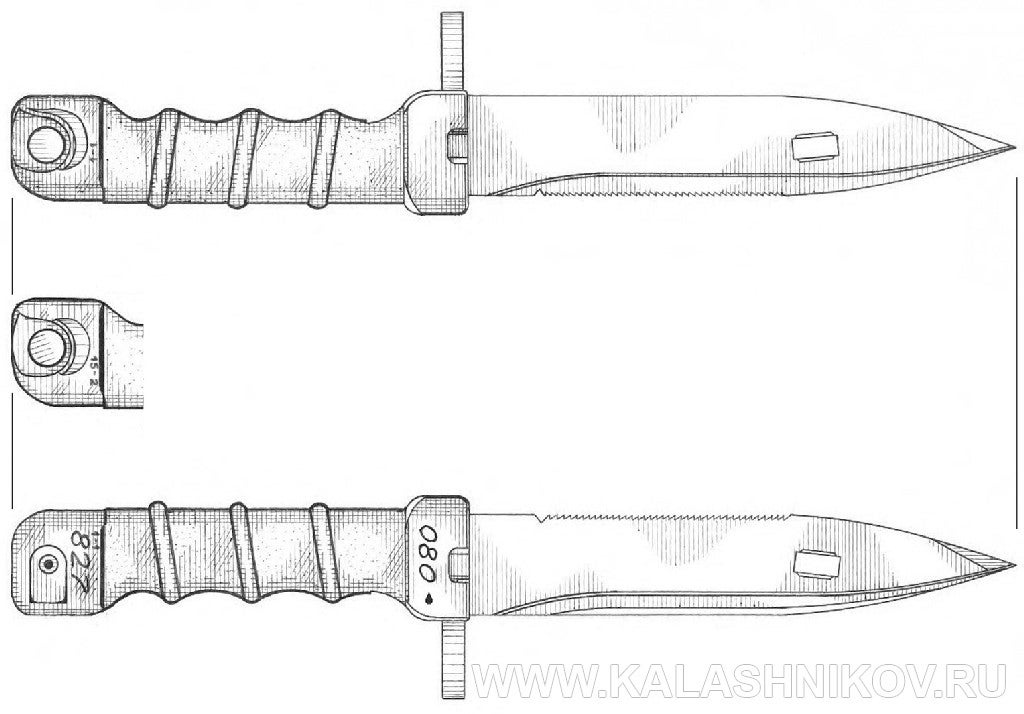
6X5 Type 3
The final version of the 6X5 series of AK bayonets is the most widespread one. It is also the model that is currently in production. The finger grooves on the handle of 6X5 Type 3 bayonet are less pronounced. The early models had the serial number on the bottom portion of the handle, whereas the serial number of later ones is marked closer to the blade. Until 1991, the handles and scabbards of these bayonets had a plum color. After 1991, the color was changed to black.
Apparently, the very first bayonet made for the AK rifles was designated as 6X1, however, it had some design issues and was never adopted. There are a couple of modern bayonets called 6X9-1 (made by a Russian company called KAMPO) and Shmel (made by a company called SARO). Reportedly, both of these bayonets were included into the Ratnik trials with the AK-12 and AK-15 rifles but looks like neither was adopted.
Sources:
Podgornov K. (2018, October 22). “Эволюция штыка. Штык-ножи 6Х2, 6Х3, 6Х4 и 6Х5 для автоматов Калалашникова”. Kalashnikov Gun Magazine. Retrieved from: https://www.kalashnikov.ru/evolyutsiya-shtyka-shtyk-nozhi-6h2-6h3-6h4-i-6h5-dlya-avtomatov-kalalashnikova/
Images from www.kalashnikov.ru, www.topwar.ru
 Your Privacy Choices
Your Privacy Choices
